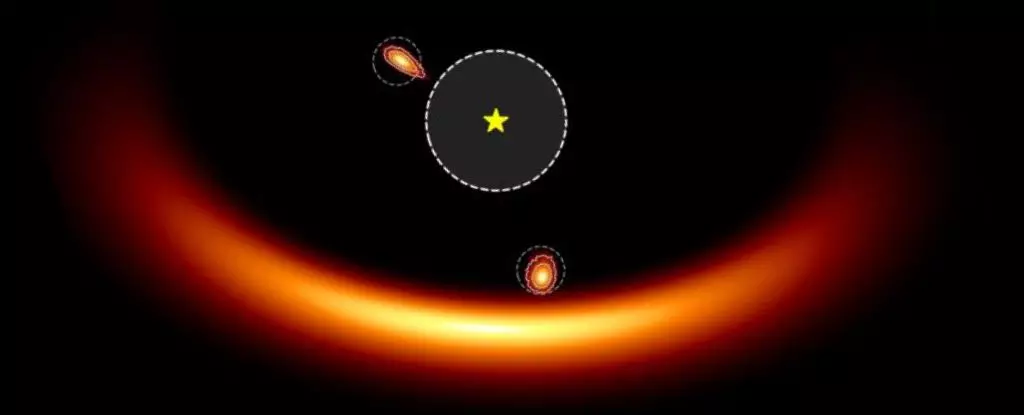Planetary formation is an awe-inspiring process sparked by the intricate dance of gas and dust swirling around nascent stars. This celestial choreography intrigues astronomers, particularly as they seek to grasp the underlying mechanisms that give rise to planets. Among the prime objectives of the James Webb Space Telescope (JWST) is to shed light on these mysteries. One of the key target systems is PDS 70, a star located approximately 370 light-years away, which is notable for the presence of two young exoplanets, PDS 70b and PDS 70c. Their existence affords astronomers a rare glimpse into the formation and evolution of planetary bodies, making the PDS 70 system a focal point for researchers keen to decode the enigma of planetary genesis.
The PDS 70 system has garnered significant attention not only for its proximity but also because it contains some of the few exoplanets ever directly imaged. The European Southern Observatory’s Very Large Telescope (VLT) first captured images of both PDS 70b and PDS 70c in 2018 using its SPHERE instrument. This milestone achievement was a substantial leap for astronomy, marking the first time a protoplanet had ever been directly observed. These initial images paved the way for deeper exploration into these burgeoning worlds, but the best was yet to come as the capabilities of the JWST were applied to PDS 70.
Recent JWST observations, documented in a study led by graduate student Dori Blakely from the University of Victoria, have unveiled new details about PDS 70b and PDS 70c. Utilizing the telescope’s Near Infrared Imager and Slitless Spectrograph (NIRISS), the research employed a technique called Aperture Masking Interferometry (AMI). This innovative approach simulates a larger aperture, enhancing the resolution of the images produced. The significance of these observations is profound, as they not only reveal more about the individual planets but also hint at the presence of additional, yet undetected, planetary bodies within the system.
The findings from the JWST observations are compelling, particularly the detection of material surrounding both PDS 70b and PDS 70c, strengthening the hypothesis that these planets are still active participants in the accretion process. This situation is akin to catching a fleeting glimpse into the early years of our Solar System, a moment when planets were in the midst of formation, scavenging the same material that fuels their growth. As Blakely remarked, each observation resembles a snapshot of cosmic history, offering vast potential for understanding planetary development.
Previously acquired data on PDS 70b and c primarily utilized shorter wavelengths, which aligned well with models for lower-mass stars and brown dwarfs. However, the JWST’s ability to probe longer wavelengths provided new insights. The results indicated a notable increase in light detection, suggesting that these planets are enveloped in warm material primarily sourced from a circumplanetary disk. Fitting spectral energy distribution models to the observational data revealed tentative evidence of mid-infrared circumplanetary disk emissions, illuminating the ongoing process of accretion and planetary growth.
In addition to the fascinating details surrounding PDS 70b and PDS 70c, the latest research hints at the presence of an elusive third planet, tentatively designated PDS 70d. While earlier research in 2024 issued hints about this potential body, uncertainties prevailed regarding its classification—was it a planet, a dust clump, or something else? The latest observations offer a more constricted view of this object’s characteristics, laying the groundwork for future studies.
Significantly, if PDS 70d is indeed a planet, it appears to possess a distinct atmospheric composition compared to its larger siblings. This divergence could suggest that planets within the same stellar system may evolve differently based on their specific formation processes and environmental conditions.
The study of PDS 70 represents not merely a singular examination but a vital opportunity to witness the beginnings of systems akin to our own. This ongoing research holds the promise of elucidating eternal questions surrounding the formation and development of planetary systems. As co-author Doug Johnstone noted, the capacity to observe planets actively accreting material offers invaluable insights into the circumstances guiding their evolution, akin to watching life emerge and evolve in real time.
The PDS 70 system offers a unique window into the universe’s processes of planet formation. Through the advanced capabilities of the JWST, astronomers are poised to decode the secrets of how worlds are born, how they evolve, and how they lay the foundations for potential life in the cosmos. Each observation represents not just a few glowing dots in the vast expanse of space but your a significant chapter in our understanding of planetary science.


Leave a Reply